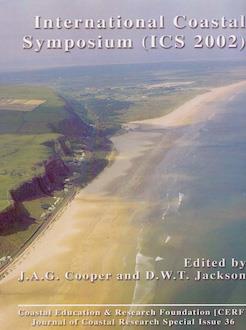Aeolian sand transport estimation is extremely important to calculate for sediment budgets in beach/dune systems. However, the number and location of high frequency sampling (> 1Hz) devices deployed on the beach/dune systems still have some limitations, related basically to equipment budget and its integrity during high energy events.
Field experiments took place in Portugal, mainly along the SW and S coasts, over long periods (weeks to almost 2 years) on medium energy, non-dissipative beaches with 0.3 mm to 0.5 mm and moderate to well sorted quartz sand. Data provided by all monitoring devices was used to feed a well-tested flow model and shear velocity was calculated at every node of the monitored beach surfaces.
Although longshore wind events were affected little by beach morphology, cross-shore wind events on the other hand resulted in well-defined, heterogeneous shear velocity zones along the beach profile. Relative shear velocity values varied from a minimum on the berm to maximum on the beach-face to berm transition, with values of up to 500% of berm data. Model application to beach face, embryo dune and foredune zones consistently resulted in 150% to 200% of berm shear velocity values. Using the width of representative beach zones to calculate potential aeolian sand transport dramatically reduces its values to about 1% if monitoring equipment is located over the berm crest and to about 60% when sensors are positioned on the embryo dune zone. These values were consistent with actual/estimated rates obtained using different sand trapping devices. Low wind speed events activate the surface sporadically, reflecting micro-topography, with saltation inertia producing complex sand transport patterns, as is usually observed in situ. As wind speed increases, shear velocity relations over the whole surface are amplified, eventually resulting in narrow beach areas intensively activated while others rarely contribute as sediment source areas to aeolian transport





